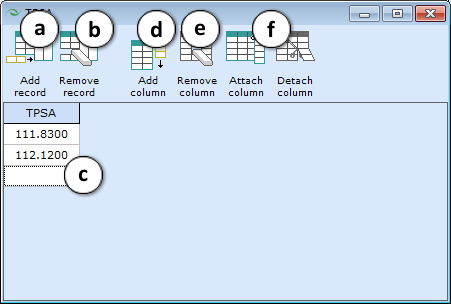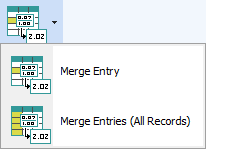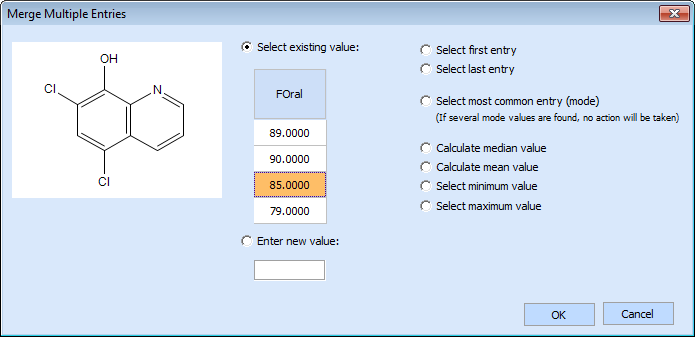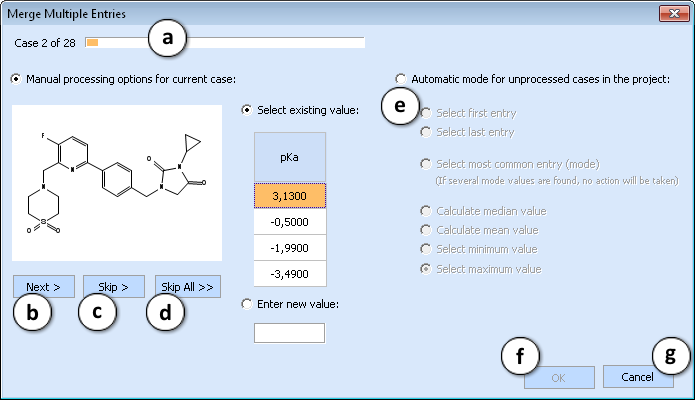Edit Menu: Difference between revisions
Jump to navigation
Jump to search
No edit summary |
No edit summary |
||
| Line 16: | Line 16: | ||
<ol style="list-style-type:lower-latin"> | <ol style="list-style-type:lower-latin"> | ||
<li>'''Add record''' - Adds a blank entry for a new record.</li><br> | <li>'''Add record''' - Adds a blank entry for a new record.</li><br> | ||
<li>'''Remove record''' - Removes the multiple records one by one | <li>'''Remove record''' - Removes the multiple records one by one depending on the current position of the selection cursor.</li> | ||
<li>Click the empty cell to start typing in it.</li><br> | <li>Click the empty cell to start typing in it.</li><br> | ||
<li>'''Add column''' - Adds an empty column to the spreadsheet and groups it with the currently selected column, or attaches it to the current group (if it already exists).</li><br> | <li>'''Add column''' - Adds an empty column to the spreadsheet and groups it with the currently selected column, or attaches it to the current group (if it already exists).</li><br> | ||
Revision as of 13:28, 20 February 2015
- Copy / Paste - Move the selected data between separate cells within the spreadsheet or exchange it with any other applications via Windows™ clipboard by means of the Copy and Paste buttons. Copy and paste structures, numerical values, plain text, etc.
- Add Column - Adds an empty column to the spreadsheet. Regardless of the position of the selection cursor at the moment of the addition, the new column will always be added in the last position, i.e. furthest to the right.
- Delete Column - Deletes the currently active (indicated by a darker color heading) column.
- Add Row - Appends an empty row to the active spreadsheet. Regardless of the position of the selection cursor at the moment of the addition, the new row will always be added in the last position.
NOTE: After pasting the molecule into the Structure column of a newly added row the existing columns in the original spreadsheet associated with modules available in the ACD/Percepta (i.e., the ones calculated from within the program) will be automatically updated to provide calculated corresponding property values for the new provided compound. - Delete Row - Deletes the currently active (indicated by a darker color heading) row.
- Hide Column - Hides, but not deletes, the currently active (indicated by a darker color heading) row.
- Show Column… - Opens window to select which columns to be visible if any were hidden.
- Group Column / Remove from Group – Select several columns to group/ungroup them (columns can also be removed from the group one by one). The name of the group that the column is assigned to is indicated in the upper part of its header. Double click on the group name to change it.

- Multiple Entries - Enables storing more than one value in the cells of the selected column. After setting the Multiple entries flag, double clicking the selected cell will bring up a special Mulitple Entries editor with a few possible options:
- Add record - Adds a blank entry for a new record.
- Remove record - Removes the multiple records one by one depending on the current position of the selection cursor.
- Click the empty cell to start typing in it.
- Add column - Adds an empty column to the spreadsheet and groups it with the currently selected column, or attaches it to the current group (if it already exists).
- Remove col - Deletes the currently active (indicated by a darker color heading) column from the entire spreadsheet.
- Attach / Detach column - Attaches an already existing column to the current group, or removes it from the group (but not from the entire spreadsheet)




